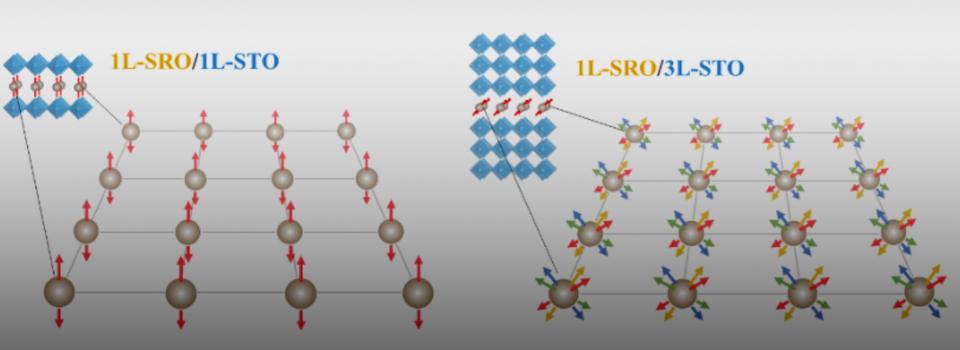May 15 2020
Published by
NYU Shanghai

NYU Shanghai Assistant Professor of Physics Chen Hanghui and his collaborators from China and the United States have discovered new properties in a magnetic oxide material. The results were published in an article titled, “Correlation-driven eightfold magnetic anisotropy in a two-dimensional oxide monolayer” in the leading journal, Science Advances.
Similar to how LEGO bricks of various shapes and colors can be layered on top of each other, physicists stack the monolayers of different oxide materials to explore new properties in them and create new thin film materials. These thin film materials created out of oxide can sometimes be used in electronic devices to save cost and improve efficiency.
Chen, a member of the NYU-ECNU Institute of Physics at NYU Shanghai, and his collaborators showed that when a magnetic oxide material is reduced from bulk size to a monolayer and embedded in monolayers of another insulating material, more interesting physical properties will emerge, which could lead to a variety of applications. Specifically, they found that when a monolayer of magnetic SrRuO3 is embedded in an insulating SrTiO3 matrix, if the thickness of SrTiO3 matrix is also a monolayer, the spins in SrRuO3 are stabilized either upwards or downwards, as shown in the left panel of Fig. 1; however, if the thickness of SrTiO3 matrix is three-monolayer thick, the spins in SrRuO3 can be stabilized along the eight directions, pointing to the vertices of a cube, as shown in the right panel of Fig. 1.
Fig. 1 Left panel: a monolayer of SrRuO3 (SRO) embedded in a SrTiO3 (STO) matrix which is also a monolayer thick. The spins (red arrow) are stabilized either upwards or downwards. Right panel: a monolayer of SrRuO3 (SRO) embedded in a SrTiO3 (STO) matrix which is three-monolayer thick. The spins (colored arrow) are stabilized along eight directions pointing to the vertices of a cube.
These new physical properties in SrRuO3 monolayers open up opportunities for device applications. For example, for two-dimensional magnetic materials, the two stable spin directions (either upwards or downwards) can mimic two electronic states. However, a SrRuO3 monolayer embedded in a thicker SrTiO3 matrix can have eight stable spin directions, which can be used in multi-state memory devices. In addition, the energy needed for spin switching depends on rotation angle. Since the spins of a SrRuO3 monolayer embedded in a thick SrTiO3 matrix have eight stable directions, switching angle in this system is 71° or 109°, which costs less energy than 180° switching when the spins can only be stabilized either upward and downward. Further research is needed to explore the feasibility of these applications.
“The research area of complex oxides has been developing for decades and what we did is just a small step towards the ultimate goal of integrating oxides into electronic devices.” Chen said. “We are lucky to find these interesting properties, and we’ll continue to explore more emergent properties in complex oxides.”
Ma Jiaji ’21, a physics and math double major at NYU Shanghai, contributed to the calculations in this project. Ma joined Chen’s research group in his freshman year while taking Chen’s course, Foundations of Physics II Honors.
Along with Professor Zhai Xiaofang from the University of Science and Technology of China (currently working at ShanghaiTech University), Prof. Chen is a co-corresponding author for this paper. This work is a collaboration with several institutions, including National Institute of Standards and Technology, the Argonne National Laboratory, University of Tennessee, University of California, Irvine, Lawrence Berkeley National Laboratory, Cornell University, East China Normal University, and New York University.


